The story follows the fortunes of noble houses as they seek to rule the fictional continent of Westeros; as well as featuring some preposterously thrilling action, it feels rooted in real people and places. We’ve rounded up some of the top filming locations, showing that you can visit the frozen north without being a monastic soldier of the Night’s Watch, and walk King’s Landing’s battlements without bumping into a tyrannical boy-king.
The places we’ve covered are great destinations in their own right and will reward fans of travel as well as Game of Thrones aficionados.
Spoiler alert: this piece does contains plot details from Series One, Two and Three, but none from the upcoming Series Four.
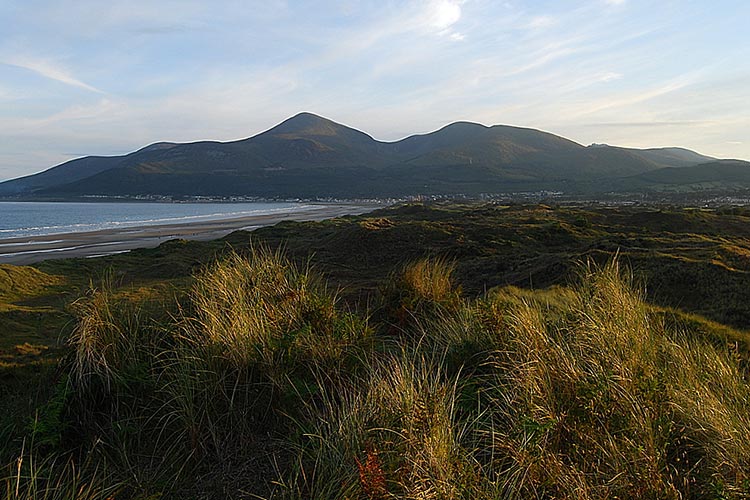
The Mourne Mountains formed the backdrop to Winterfell. Image by Ryan McDonald / CC BY 2.0.
County Down is where it all began: the opening sequence of Game of Thrones, in which a patrol north of the Wall met a messy end, was filmed in Tollymore Forest Park.
Nearby Castle Ward stood in for Winterfell, home of the Starks, the sympathetic lords of the north, and Inch Abbey featured as the Riverlands, where the army of the north waited to cross the River Trident, and where Robb and Caitlin Stark learned of Ned Stark’s execution – and vowed to take revenge. All three are near appealing Newcastle, southeast of Belfast, an easy drive from the city.
Set foot in County Down, and you’ll see why the filmmakers chose it: its rugged uplands and tranquil coast form one of the province’s most appealing corners. Hikers will have a particularly fine time of it, and can walk the Mourne Mountains, whose granite hills are dotted with whitewashed cottages and yellow gorse. The Brandy Pad – an ancient smugglers’ trail – provides a great introduction, crossing the hills and Tollymore Forest Park before ending up in Newcastle.
Stay in Briers Country House or make like the Dothraki and pitch a tent at Tollymore Forest Park’s campsite.
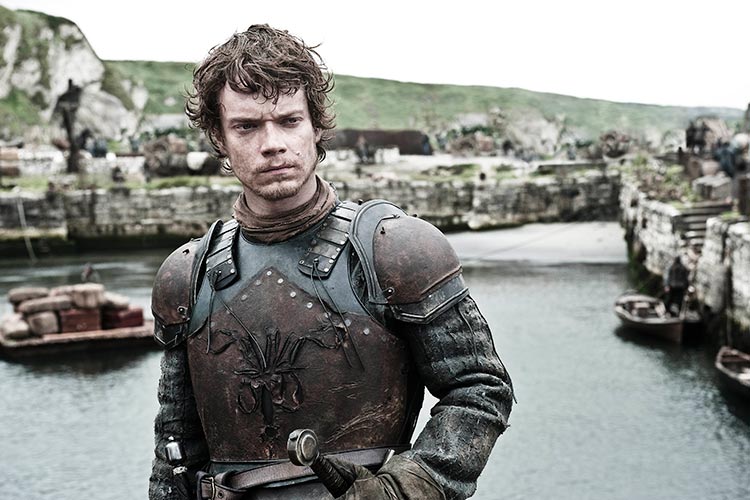
Game of Thrones' Theon Greyjoy (played by Alfie Allen) at Lordsport (Ballintoy). Image courtesy of Sky.
The dramatic shoreline and rolling countryside of County Antrim have provided plenty of locations for Game of Thrones. The picture-postcard village of Ballintoy was Lordsport on Pyke, the island base for the Greyjoy clan, rulers of the Viking-like Iron Islanders. Along the coast, the harbour town of Ballycastle represented the Free City birthplace of scheming eunuch Varys. Inland, Dark Hedges Road, near Ballymoney, stood in for the section of the Kingsroad along which Arya Stark fled from King Joffrey’s soldiers.
The real landscape offers just as much drama: the famous Giant’s Causeway and Carrick-a-Rede Rope Bridge are two of Northern Ireland’s star attractions, and the stunning walk along the Causeway Coast Way between the two sights takes in sea cliffs and broad sweeps of sand.
Exhausted by sightseeing? Ballintoy has a fine B&B, Whitepark House, while the Causeway Hotel is only a stone’s throw from the Giant’s Causeway. If joining the locations under your own steam seems tricky, try a tour.
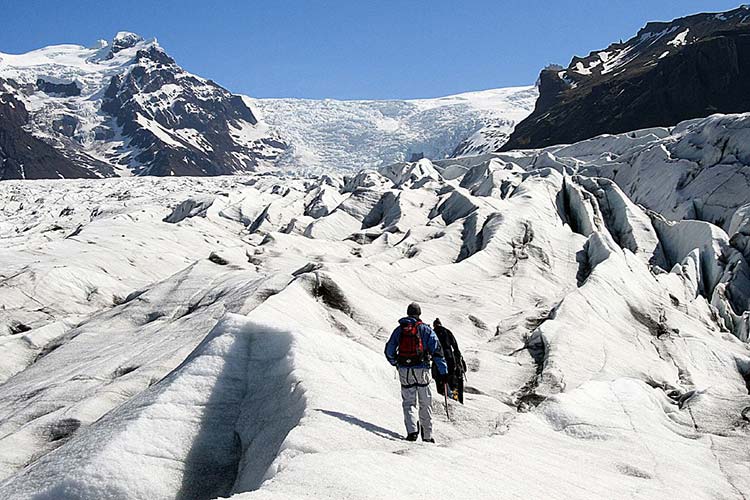
Svínafellsjökullglacier - you don’t have to be in the Night’s Watch to visit. Image by Guillaume Baviere / CC BY 2.0.
Iceland’s grand, windswept landscapes form the backdrop to scenes set north of the Wall, in Westeros’s wild northern reaches. The Night’s Watch made their desperate stand against the wights at the Fist of the First Men, shot on the Svínafellsjökull glacier in Vatnajökull National Park – which also stood in for other locations in the Frostfangs, the mountain range that covers much of the far north. Iceland as a whole has a wider role to play: in the north of the country, Lake Mývatn was where Mance Rayder’s wildling horde camped, while filming in July for Series Four captured the more temperate regions near the Wall.
Vatnajökull National Park takes up more than 10% of Iceland, and is the world’s largest ice cap outside the poles. It attracts serious hikers and climbers as well as weekenders from Reykjavik (around 250km to the west), and visitors can explore glaciers, caves and waterfalls, as well as taking interpretative forest walks and climbing Iceland’s highest mountains. There isn’t much accommodation in the park itself – the Visitor Centre Campsite, and Bölti, both in Skaftafell (the park’s popular southern section) are options.
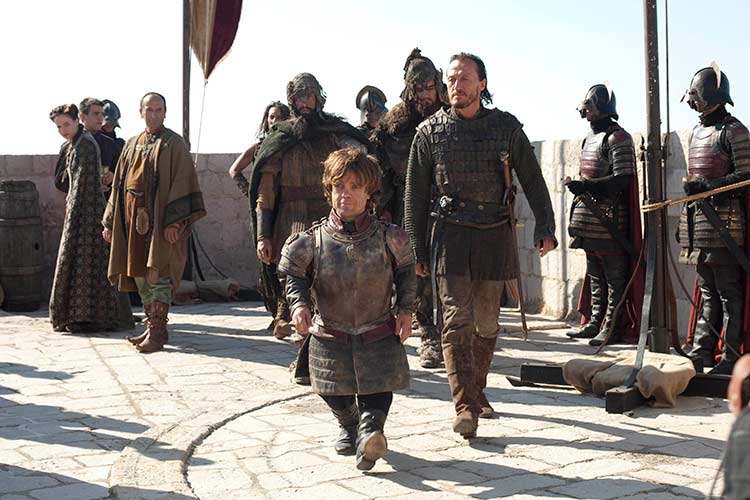
Game of Thrones' Tyrion Lannister (played by Peter Dinklage) on the walls of Dubrovnik. Image courtesy of Sky.
With its gleaming white-stone city walls and sunny seaside location, Dubrovnik on Croatia’s southern Dalmatian coast is a perfect stand-in for King's Landing, capital of the Seven Kingdoms and home to the Iron Throne.
Walking atop the old town’s remarkably well-preserved medieval walls, you can look out across the bay where the Battle of Blackwater was shot towards free standing Lovrjenac Fort, which was transformed into the majestic Red Fort. As you circle Minčeta Tower at the walls’ highest point, you’ll be following in the footsteps of Daenerys Targaryan as she desperately tried enter the House of the Undying to rescue her dragons. There are many more filming locations around here, and an organised tour will make sure you don’t miss any.
A short boat ride away, beautiful Lokrum Island, where scenes set in Qarth were filmed, has peaceful forests and excellent beaches, and makes a great day trip. There’s also a gorgeous Renaissance-style arboretum at Trsteno Gardens, 13km northwest of Dubrovnik, where Sansa Stark met with Lady and Margaery Tyrell.
Great accommodation options in Dubrovnik's old town include Apartment Karmen and Fresh Sheets Hostel.
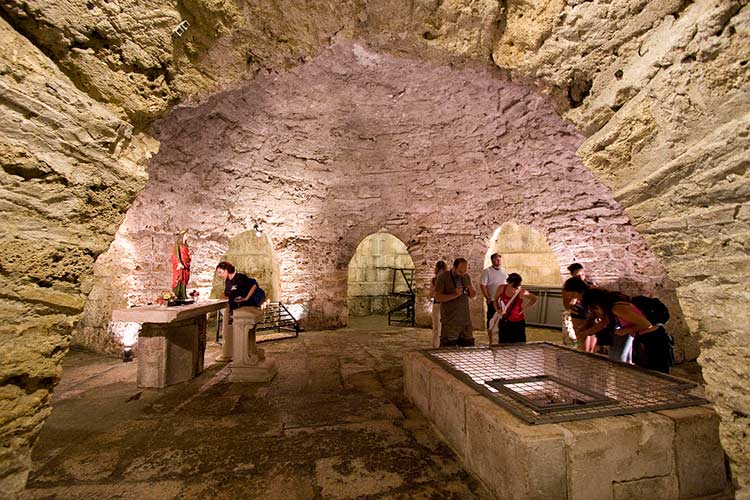
The cellars beneath Diocletian's Palace in Split. Image by Cesar Gonzalez Palomo / CC BY-SA 2.0.
For Season Four, filming has also moved north of Dubrovnik to the coastal city of Split. Klis Fortress and a quarry in Žrnovnica, both to the northeast of the city, were used to film huge battle scenes with dozens of extras that will feature in the forthcoming series.
The primary location within the city was Diocletian’s Palace, one of the most impressive Roman ruins in the world. Built in AD 295 as a retirement palace for the Roman emperor Diocletian, the huge square fortress is no museum piece – instead it is the lively heart of the city, with bars, shops and restaurants packed inside its ancient walls. To see where filming took place, head down into the cellars at the southern end of the palace, which in Roman times were used for storage of food and wine.
If you’d like sleep like an emperor, Hotel Vestibul Palace and Hotel Peristil are both within the palace walls.
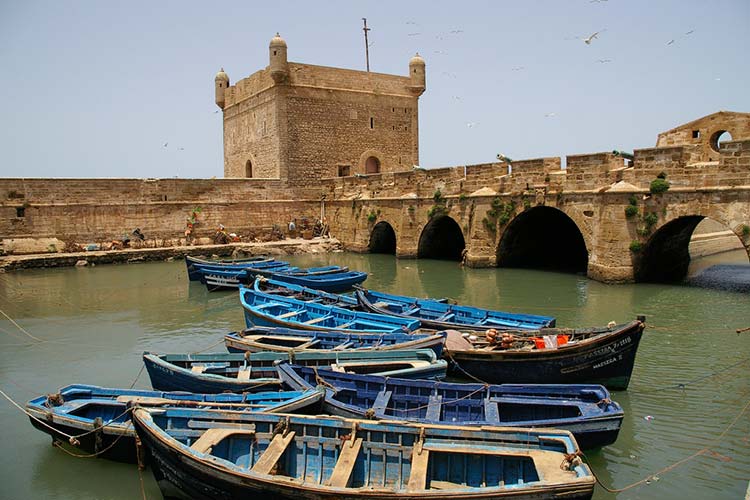
Fishing boats in the harbour of the atmospheric Moroccan city of Essaouira. Image by Jean-Marc Astesana / CC BY 2.0.
Astapor on Slaver’s Bay is the site where Daenerys Targaryen really came into her own: freeing an army of slaves, double-crossing their evil owner, then getting her dragon to blast him in the face with fire. Obviously, such high-octane action demanded a set worthy of the drama - and Morocco’s coastal city of Essaouira, which stood in for Astapor, provided all the atmosphere you could ask for. The old sandstone ramparts and walkway appeared suitably timeless, while moments of silent tension were heightened by flags whipping in the North Atlantic breeze, and the cry of seagulls in the background.
In reality, Essaouira is one of the most laid-back places you can visit in Morocco – surfers flock here for the reliable waves, and the city is also known for its artistic streak. Small studios and galleries line many of the narrow streets, and you can pick up woodcarvings and other souvenirs for a snip - or make something yourself at a woodcarving workshop.
Stay at Dar al Bahar for unobstructed views over the rugged coastline, perfect for sliding into a GoT-themed fantasy. Prefer to get a feel for real-life Essaouira? Try Dar Afram, a lively guesthouse in the heart of the medina.